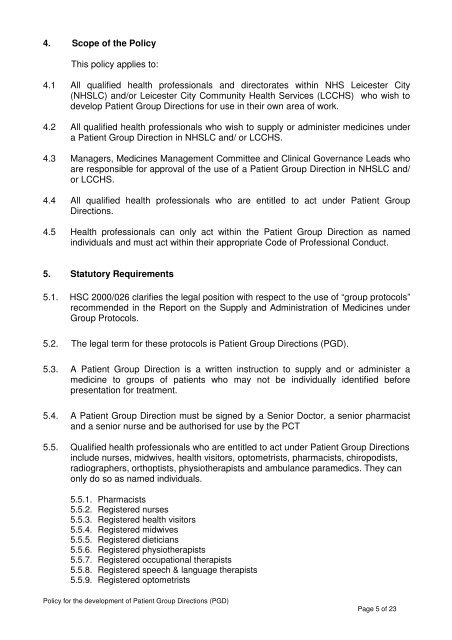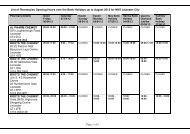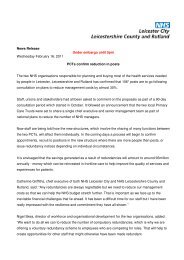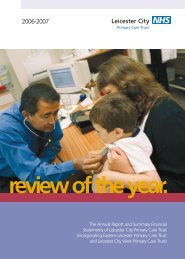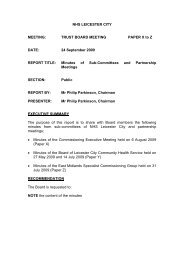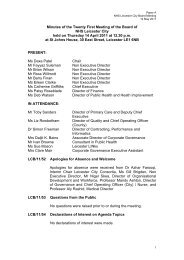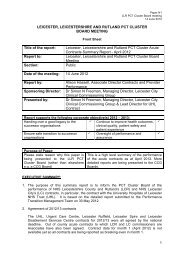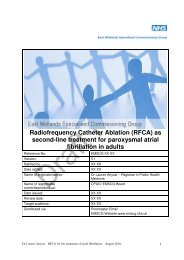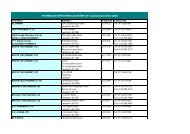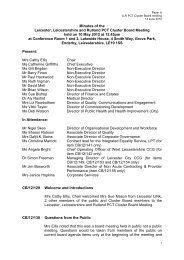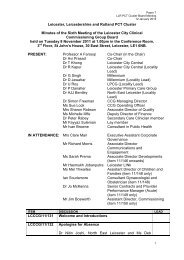POLICY FOR PATIENT GROUP DIRECTIONS (PGD) - NHS
POLICY FOR PATIENT GROUP DIRECTIONS (PGD) - NHS
POLICY FOR PATIENT GROUP DIRECTIONS (PGD) - NHS
Create successful ePaper yourself
Turn your PDF publications into a flip-book with our unique Google optimized e-Paper software.
4. Scope of the PolicyThis policy applies to:4.1 All qualified health professionals and directorates within <strong>NHS</strong> Leicester City(<strong>NHS</strong>LC) and/or Leicester City Community Health Services (LCCHS) who wish todevelop Patient Group Directions for use in their own area of work.4.2 All qualified health professionals who wish to supply or administer medicines undera Patient Group Direction in <strong>NHS</strong>LC and/ or LCCHS.4.3 Managers, Medicines Management Committee and Clinical Governance Leads whoare responsible for approval of the use of a Patient Group Direction in <strong>NHS</strong>LC and/or LCCHS.4.4 All qualified health professionals who are entitled to act under Patient GroupDirections.4.5 Health professionals can only act within the Patient Group Direction as namedindividuals and must act within their appropriate Code of Professional Conduct.5. Statutory Requirements5.1. HSC 2000/026 clarifies the legal position with respect to the use of “group protocols”recommended in the Report on the Supply and Administration of Medicines underGroup Protocols.5.2. The legal term for these protocols is Patient Group Directions (<strong>PGD</strong>).5.3. A Patient Group Direction is a written instruction to supply and or administer amedicine to groups of patients who may not be individually identified beforepresentation for treatment.5.4. A Patient Group Direction must be signed by a Senior Doctor, a senior pharmacistand a senior nurse and be authorised for use by the PCT5.5. Qualified health professionals who are entitled to act under Patient Group Directionsinclude nurses, midwives, health visitors, optometrists, pharmacists, chiropodists,radiographers, orthoptists, physiotherapists and ambulance paramedics. They canonly do so as named individuals.5.5.1. Pharmacists5.5.2. Registered nurses5.5.3. Registered health visitors5.5.4. Registered midwives5.5.5. Registered dieticians5.5.6. Registered physiotherapists5.5.7. Registered occupational therapists5.5.8. Registered speech & language therapists5.5.9. Registered optometristsPolicy for the development of Patient Group Directions (<strong>PGD</strong>)Page 5 of 23


